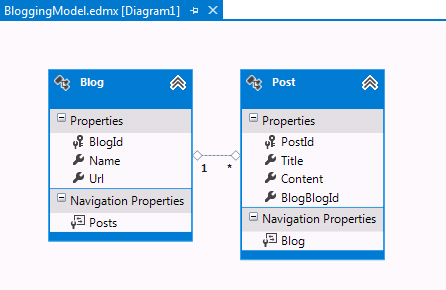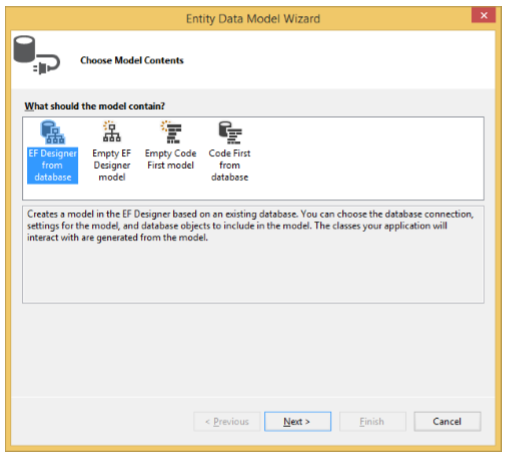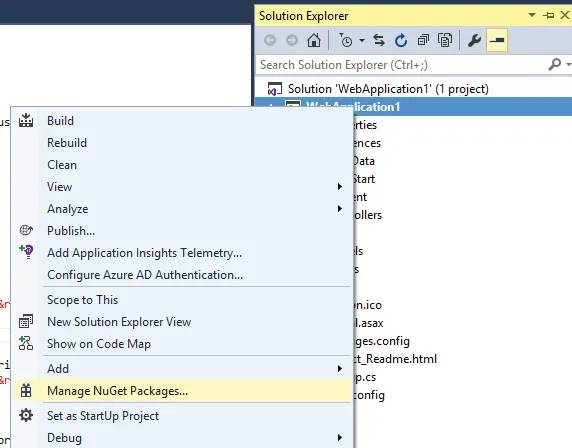
Entity Framework Core is a popular object relational mapping software on the market. The .NET Core provides an efficient method for writing queries in C# while EF Core is responsible for transforming it into a similar SQL language and executing it on a connected database.
While we are building applications on our own, we typically use Codefirst approach – that is we design our Entities in C# classes with annotations for specific constraints (including Primary or Foreign Keys, NonNull etc). In the database-first approaches class entities and contexts are automatically created in an EF core. So you need to first build your database. EF Core requires SQL Server installed. There are two options, select either of these. If you are installing SQL Server 2019 there will be SQL servers running as a command line tool under Start menu in Windows. You should open it from Visual Studio and select SQL Object Explorer in VS. First create the company's database in SQL Server and call them Company. Create two tables in that table and name these: Employee Table as shown below. The departments table below contains two digits. Tell me the best way of adding new tables to an existing Database schema and putting them into an application? Since we now use a DB based approach, the changes happen first on a database that has been built and subsequently added to the code. Once these changes get included in the program, you can recreate entities along with all the new entities. Scaffold-DbContext creates class NorthwindContext inherited from Db Context. This contains the instance DBContext Options that provides configuration information. NorthwindContext The C# class contains an OnConfiguration method to configure EF on NorthWindDB. The model can create tables using tables containing constraints using the Fluent API. NorthwindContext is producing code. Entity FrameworkCore cannot work with Visual Designer. Scaffold-DBContext is a command which creates entity classes and DBContext classes using existing database schema. The ScaffoldContext can accept various parameters and the data connection string. Create an entity and DB context folder using name Models->DB. Install Package Manager from Tools> Nuget Package manager -> Package manager console. Execute this commands. It generates entity classes on each data table in Northwind and NorthwindContext with virtual properties on tables that store the data on the table. Tables with primary key were created. Entity Framework Core and any other Object-Relational mapping program (ORM) for that matter create a "bridge" between the database and application model in a manner that the queries written in our application modeling classes are considered based on our database. Tell me about the process of translating? This can be accomplished via an excellent linkage between application models classes with database tables structures. It works really well if we create new database as the constraint we have in our applications model is converted in during our first run. Note the OnConfiguring method in this code, the connection string contains tightly connected connections. There are no settings for this file in the application configuration file. It allows the configuration of the connection string in the appsettings file in the database.json file. Entity Framework Core supports database-first approach by using the Scaffold-Db Context command within package managers console. It creates a dbContext or entity class to a defined database. Make the model using Scaffold-DBContext. Add EntityDBContext to the Entity and Model folder with name as Model -> Database. Open Package Management console using Tools->Nuget Packages Manager > Package Management console. Versioning of a database can be tricky, but with Code First Migration it becomes very effective. Since the schema of your databases rely completely on your code model, your version control of the code helps with versioning your databases. Right-click on any surface and select UpdateModels. Select the Update wizard, select your tables, then click the Finish. Database First Approach offers a substitute for the Code First and Model First approaches for the entities' Data Model. It creates Modelcodes (classes, property and DbContext) for the project and these classes are the linking point between database and controller. Entity Framework uses the Database First approach to create software from a database. You can create and run a data model and complete application using Visual Studio with very little code. The next step involves installing the latest Entity Framework from Nuget. NuGet package manager is a program that manages NuGet packages. You need NuGet to install the NuGet latest version. Choose Online menu. Choose a Entity Framework package. Please download the file. Let us create an existing DB First Demo project. The model is created when you right-click a console project in Solution Explorer and click Add new items. 3. Select the entity model from the middle pane of the web and put the name Databasefirstmodel in this field. Entity Framework six does not support it. Those with cross-platform functionality will have to use Entity Framework Core. The best approach to use Entity Framework 6 is to use EF 6 context and model classes to create a target library. The Database first approach provides alternatives to the Code First and the Model first methods for the Entities Data Models. The model code (classes and properties, DbContext, etc.) will be created through DBContext from the project data and are linked to database and control. Cores of NET. Embedded framework supports Database first by using scaffold-db context in packages. The following command builds a DbContext and Entities class for a given database. Code First Approach - ASP.NET Core. Open Visual Studio 2017. Please select File > New > Project from the Menu. In a new window for the new project, click on Installation > Visual C# >>. Select the web app development template on the middle page of the website. Entity Framework Core supports Databases First via the ScaffoldDbContext command in the Package Manager Console. Contains DbContext and entity types for specific databases. EF provides a method of generating software applications using a database. You can access a DB then create an object and complete the application using very little code. The database first approach should be used for databases that already exist. Then we can create contexts for existing databases by using EDM Wizard. It is ideally suited when applications utilize existing databases. Copy Code First into a database by right-clicking on Visual Studio -> Add -> Create. The '" Select the data model in the Add new item window and specify the model names (these are the classes for the context) and click Add. This opens the Entity data models wizard. Automatic generation of model data. Choose Create Model from Database Schemata from Start point. Click Connect to the Connections dropdown menu, choosing the name of your data connection. Choose from Building View From. It will be created using the DbContext scad. The command contains two needed input parameters - the linkstring and the providers string. Published on Aug 9, 2022 Tags: SQL Tutorials for Beginners, Intermediate and Advanced Users
| Entity Framework Tutorials For Beginners and Professionals
Did you enjoy this article? If you did here are some more articles that I thought you will enjoy as they are very similar to the article
that you just finished reading.
No matter the programming language you're looking to learn, I've hopefully compiled an incredible set of tutorials for you to learn; whether you are beginner
or an expert, there is something for everyone to learn. Each topic I go in-depth and provide many examples throughout. I can't wait for you to dig in
and improve your skillset with any of the tutorials below.
Database-First approach in Entity Framework Core

Creating database in SQL Server
using System;
using System.Data.Common;
using System.Data.Entity;
using System.Data.Entity.Infrastructure;
using System.Data.Entity.Core.Objects;
using System.Linq;
namespace Repositories.EF
{
public partial class MasterEntities : DbContext
{
public MasterEntities()
: base("name=MasterEntities")
{
}
// This constructor is for unit testing...
public MasterEntities(DbConnection connection)
: base(connection, true)
{
}
protected override void OnModelCreating(DbModelBuilder modelBuilder)
{
throw new UnintentionalCodeFirstException();
}
}
}
Adding new tables into Database with Database First
public void Initialize()
{
(Context as IObjectContextAdapter).ObjectContext.ObjectMaterialized += ObjectContext_OnObjectMaterialized;
(Context as IObjectContextAdapter).ObjectContext.SavingChanges += ObjectContext_SavingChanges;
}
Configure data context via the package manager console

Create models using Scaffold-DbContext
How does Scaffolding work?
Registering DBContext with Dependency Injection
Frequently Asked Questions
Does .NET Core support database first?
How do I create a DbContext in Entity Framework core database first?
Which is better code first or database first in Entity Framework?
How do I update Entity Framework model from database first in .NET Core?
What is DB first approach in Entity Framework?
What is database first in .NET Core?
How do I create a database first in Entity Framework?
How do I use database first approach in Entity Framework?
Can you use Entity Framework with .NET Core?
What is database first approach in Entity Framework?
Can I use database first approach in ASP.NET Core?
How do you create a database using code first approach in Entity Framework Core?
Does .NET core support database first?
What is database first in .NET core?
Which approach is best in Entity Framework?
How do I create an ef model from an existing database?
How do I make a database model?
Which of the following is the correct command to create model based on your existing database in Entity Framework Core?
Related Posts
Tutorials
Learn how to code in HTML, CSS, JavaScript, Python, Ruby, PHP, Java, C#, SQL, and more.

